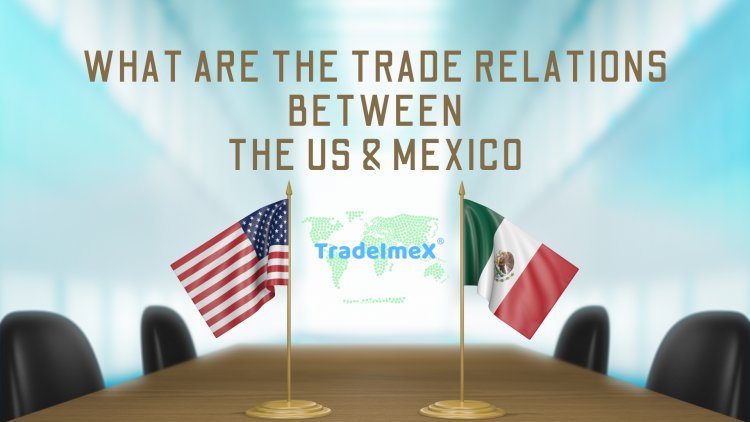China And US Trade Relations: A Rush To Beat The Trade Deal Clock

Table of Contents
The Current State of China US Trade Relations
The history of China US trade relations is a complex tapestry woven with threads of cooperation and conflict. For decades, the relationship was marked by increasing interdependence, with both nations benefiting from substantial trade volumes. However, this harmony fractured in recent years, leading to escalating tensions. The imposition of tariffs by both countries, beginning in 2018, significantly altered the landscape. This trade war, fueled by disagreements over various economic and geopolitical issues, significantly impacted global markets.
- Impact of tariffs: Tariffs imposed by both the US and China have led to increased costs for consumers, disrupted supply chains, and negatively impacted economic growth in both countries. Businesses faced uncertainty and reduced profitability.
- Key sticking points: Negotiations have repeatedly stalled over key issues, including intellectual property rights protection (IPR), forced technology transfer, market access for US companies in China, and concerns about China's industrial subsidies. These are fundamental disagreements that go to the heart of economic fairness and national security.
- Recent trade statistics: While the overall volume of trade between the US and China remains substantial, it has been negatively impacted by the trade war. Data reveals a decline in certain sectors, highlighting the disruptive nature of the tariffs. The World Trade Organization (WTO) has been involved, with both sides presenting their arguments and seeking resolutions, albeit with limited success.
- The role of the WTO: The WTO has been a significant forum for discussions, but the effectiveness of its dispute settlement mechanism has been challenged in recent years, leaving many to question its ability to resolve this high-stakes conflict.
The Pressure to Finalize a Deal
The urgency to reach a China US Trade Deal stems from multiple factors. Both countries face significant economic and political pressures to resolve the ongoing trade dispute.
- Economic implications: Continued trade tensions risk further slowing economic growth in both countries, impacting job creation and investment. Uncertainty deters businesses from making long-term commitments, stifling innovation and productivity.
- Political implications: The trade war has become a highly charged political issue in both the US and China, impacting domestic politics and international relations. The outcome significantly affects the image and standing of both governments on the global stage.
- Impact on global markets: The dispute has created significant uncertainty in global markets, impacting supply chains and investor confidence worldwide. Businesses are forced to navigate unpredictable trade policies, affecting their global operations.
- Upcoming elections: The timing of the trade negotiations is highly sensitive, given upcoming elections in both the US and China. Political considerations inevitably influence the pace and outcome of the negotiations.
Key Challenges and Obstacles
Reaching a mutually beneficial agreement between the US and China presents several significant challenges. The fundamental differences in economic systems and philosophies create inherent obstacles.
- Differing economic systems: The contrasting economic models – China's state-controlled system versus the US's market-based approach – lead to fundamental disagreements on issues like market access, state intervention, and intellectual property protection.
- Intellectual property theft and technology transfer: Concerns about intellectual property theft and forced technology transfer by Chinese companies remain a major stumbling block. The US seeks stronger protections for its innovative industries.
- Non-tariff barriers: Beyond tariffs, non-tariff barriers such as regulatory hurdles, bureaucratic delays, and discriminatory practices hinder market access for US companies in China.
- Enforcement mechanisms: Ensuring effective enforcement of any agreed-upon deal is a critical concern. Mechanisms for monitoring compliance and addressing violations are crucial for the long-term success of any agreement.
The Role of Technology in the Negotiations
Technological competition is a central theme in the China US Trade Deal negotiations. The strategic importance of technology, particularly in areas like 5G and semiconductors, fuels the tension.
- 5G technology: The race to dominate 5G technology has significant strategic implications for national security and economic competitiveness. Concerns about Chinese companies' dominance in this area drive US policies.
- Semiconductor industry: The semiconductor industry is another critical area of competition, with both countries vying for leadership in this technologically advanced sector. This directly impacts national security and economic competitiveness.
- Data security and privacy: Concerns about data security and privacy related to Chinese technology companies contribute to the complexities of the negotiations.
- Impact on innovation: The trade tensions affect innovation and technological advancement in both countries by creating uncertainty and hindering collaborations.
Potential Outcomes and Scenarios
The future of the China US Trade Deal remains uncertain, with several potential scenarios playing out.
- A "Phase One" deal: A limited agreement focusing on specific areas could be reached, offering some short-term relief but leaving many major issues unresolved.
- A more comprehensive agreement: A broader and more ambitious agreement addressing all key sticking points could be achieved, leading to greater stability in trade relations.
- Further escalation of trade tensions: Failure to reach an agreement could lead to a further escalation of trade tensions, potentially triggering more tariffs and harming global economic growth.
- Long-term implications: The outcome of these negotiations will profoundly impact the long-term bilateral relationship between the US and China, shaping the global economic and geopolitical landscape for years to come.
Conclusion
The current state of China US trade relations is characterized by a precarious balance. The pressure to finalize a deal is immense, driven by economic and political considerations for both countries. However, significant challenges remain, including differing economic systems, concerns over intellectual property, and the complexities of technology competition. The potential outcomes range from a limited agreement to a prolonged stalemate with potentially severe global consequences. Staying informed on the evolving dynamics of the China US Trade Deal is crucial. Continue to follow reputable news sources for updates and analysis as this crucial negotiation unfolds. Understanding the nuances of this complex relationship is critical for businesses and individuals alike.

Featured Posts
-
 Toledo Gas Prices Drop Week Over Week
May 22, 2025
Toledo Gas Prices Drop Week Over Week
May 22, 2025 -
 Top Gbr News Grocery Savings Lucky Quarter And Doge Poll Results
May 22, 2025
Top Gbr News Grocery Savings Lucky Quarter And Doge Poll Results
May 22, 2025 -
 Rezultati Ta Rozklad Matchiv Ligi Natsiy 20 03 2025
May 22, 2025
Rezultati Ta Rozklad Matchiv Ligi Natsiy 20 03 2025
May 22, 2025 -
 British Runners Australian Odyssey Confronting Pain Insects And Allegations Of Cheating
May 22, 2025
British Runners Australian Odyssey Confronting Pain Insects And Allegations Of Cheating
May 22, 2025 -
 Columbus Fuel Costs Significant Price Differences Noted
May 22, 2025
Columbus Fuel Costs Significant Price Differences Noted
May 22, 2025
